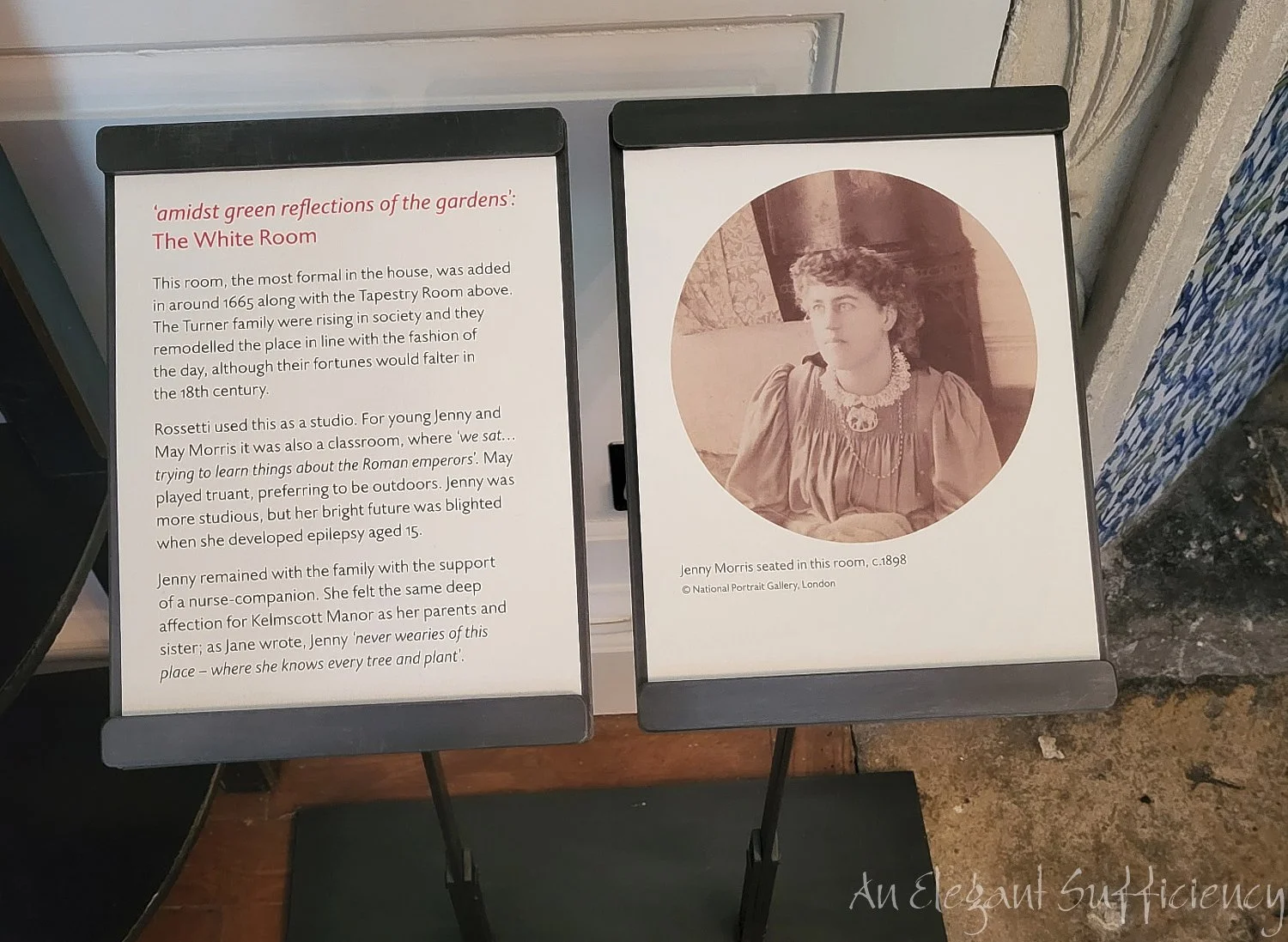To Kelmscott
After two long days out, packed with activity we were glad of a later start as our third visit of the week was the closest to home. Kelmscott Manor, the home of William Morris and his family has been closed for some time but reopened in April having been extensively restored.
I see from a brief mention in an earlier blog post that I was last here in 2010. I visited with our Californian friend Mary and her sister Joanna and chatting with them over dinner at The Pig near Bath recently, they reminded me of our experience there, which was not good. I had wondered why I could remember so little about the place; I have no notes nor pictures and there’s scant mention in my blog post. Yet, this was an important place to visit and we’d put ourselves out to go there (there were strange opening times back then). It was Joanna who triggered the memory of the sour people there, who forbade any use of a pencil for note taking or sketching as we toured the house where, needless to say, photographs were totally out of the question. Without such memory prompts I couldn’t recall anything of the house at all and very much hoped for an improved visitor experience this time!
The reopening and the forthcoming publication of a new book has reignited enthusiasm from visitors to the Manor and our plans to have lunch in The Plough in Kelmscott village before our visit were almost thwarted by the lack of a place to park the car. We made it, thank goodness and having enjoyed some good home cooking and a pint of the local Village Idiot brew (not sure about the name!) we made use of the Kelmscott Manor car park and the electric vehicle transfer to the Manor itself. So far so good!
Having made our way into the house through the front door, we turned right into…well, what room was this? Though the volunteer guide was eager to offer some general information and explain what we could and couldn’t do, the information she had to share about the room and its contents was pretty thin. No sooner had she finished her explanation to us than the next group was coming in and she was starting over. sigh I had hoped for better this time round.
I did what I usually do in such circumstances. I focused on the lovely things around me, took photographs (now permitted) and admired the handiwork and technical skill that had gone into the making of them.
In each room there was a volunteer and we had been advised that under no circumstances should we sit on any of the furniture in the rooms. If we needed to sit down at all, then we should use the window seats which were there. The thing was, in most rooms, it was the volunteer who was sitting on the window seat surrounded by papers - notes and historical details of the room and contents. If we had a question, they would consult these papers and answer, but for the most part, they read their notes or sat quietly.
Our questions might be prompted by the sight of a familiar image or a curious item and generally speaking, the answer was to be found in the notes.
To be honest, however, I was happy to admire the beautiful tapestries and seized the chance to capture some lovely details rather than bother the volunteers.
Speaking of whom, there were two notable exceptions. The gentleman in the bedroom where these glorious hangings were to be found was both enthusiastic and knowledgeable and his eagerness to share his enthusiasm brought him a keen audience of visitors. He held a small torch to point out details, told stories of the construction of the bed frame and marvelled along with everyone at the remarkable colours which remain.
Elsewhere, a climb up a steep split staircase was rewarded with a cheerful greeting from the volunteer up in the attic, who was willing and able to tell us about how it came to be, adding plenty of detail to enable us to imagine how the rooms up here were used.
From here, we worked our way back downstairs, reflecting on our visit as we went. With these two notable exceptions, we all felt disappointed by our experience and left feeling that we’d missed opportunities to learn more about the Manor. When details were not as forthcoming as we’d hoped, we looked for information to read on labels around each room. Perhaps such things would detail what we were looking at and offer some background information?
But no, some boards offered tales from family life, such as the one above, about the inspiration for a fabric design.
Others offered more useful background to the room itself, though were more general than specific. For example, were the tiles in the fireplace part of the Turner family’s remodelling of the house or are they a Morris design? (The volunteer’s notes did not have the answer to that question).
We left via the gift shop (empty handed) and took the electric buggy back to the car park feeling rather less enthusiastic than expected. On the way home, my Hero described the Manor as “a shrine” and a place for the faithful cognoscenti to visit rather than somewhere to learn about the man and his work. The rest of us nodded in agreement. Incidentally, Kelmscott Manor is owned and operated by the Society of Antiquaries rather than the National Trust . Now, not everyone agrees with the policies and principles of the National Trust, but I am confident about one aspect of their work: they train and support their volunteers very well indeed and generally speaking, those volunteers add a great deal when visiting a NT property. Perhaps the SoA has something to learn here?























